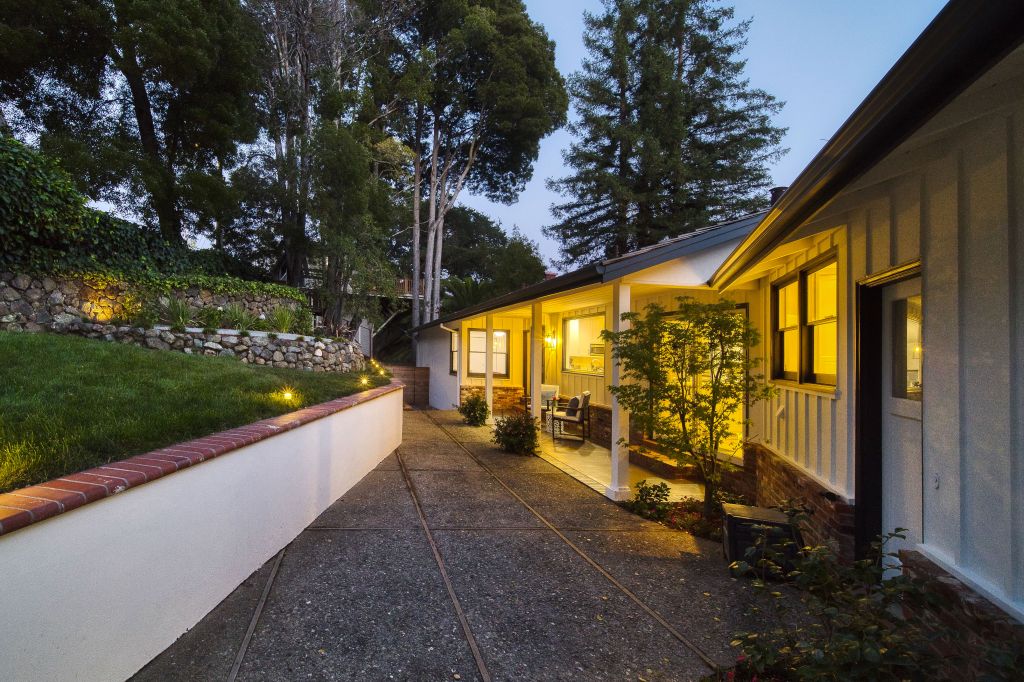Changes in Burlingame Flood Insurance
Highlights:
- A large part of Burlingame is located within a 100-year floodplain-
In 1968, Congress created the National Flood Insurance Program (NFIP) to ensure that those living in flood zones were insured.
-
FEMA manages the NFIP
-
In 2012, the Biggert-Walters Act aimed to raise rates and update Flood Insurance Rate Maps, making the program more financially stable but putting a burden on homeowners in flood zones.
-
The 2014 Homeowner Flood Insurance Affordability Act of 2014 (HFIAA) aims to undo the negative impact of Biggert-Walters
-
In May, FEMA issued a bulletin ordering insurers to freeze rates of homes being sold until it can “issue new rate tables and refund excessive premiums”
Let's be honest: when you think “natural disasters” and “the Peninsula,” flooding isn’t the first thing that leaps to mind; “earthquake” is. But did you know that according to USA.com, Burlingame flooded 162 times between 1950 and 2010? Or that Burlingame contains one of the largest floodplains in the Bay Area? It stretches between the city’s northern and southern borders and from San Francisco Bay roughly to El Camino Real, reaching further inland in spots. Basically, unless you live in the hills, in Ray Park or in parts of Easton Addition, you live in what FEMA (the Federal Emergency Management Agency) calls a “Special Flood Hazard Area” (SFHA).
“Flooding” doesn’t have to mean New Orleans after Katrina; it can also mean overflowing storm drains or two feet of water in a street-level parking garage, something that happened to a 21-unit condo building on the 700 block of El Camino Real during a recent storm. “The volume of water coming down from Hillsborough is just too much to handle,” a resident told KTVU at the time.
In 1968, Congress created the National Flood Insurance Program (NFIP) to ensure that those living in flood zones were be insured. The program is administered by FEMA and until 2012 was a minor consideration for those owning homes in 100-year floodplains (a 100-year floodplain is defined as having a 1 percent chance of flooding in any given year). 2012 was the year of the Biggert-Walters Flood Insurance Act.
Meant to streamline and close loopholes in the National Flood Insurance Program, Biggert-Walters required the NFIP to “raise rates to reflect true flood risk, make the program more financially stable and change how Flood Insurance Rate Map (FIRM) updates impact policyholders,” according to FEMA. FEMA continues: “The changes will mean premium rate increases for some – but not all – policyholders over time.” The Act also included an extensive update of floodplain maps.
If this sounds ominous for homeowners in a flood zone, that’s because it is; and if it sounds like something that might raise some serious pushback from just about everyone, that’s because it has.
The goal was to eliminate taxpayer subsidization of flood insurance, which resulted in steep and sudden increases for flood zone homeowners – and for those purchasing homes built before 1968 that had been required to have flood insurance. The rate increases were large enough to have a significant negative impact on real estate markets in flood-prone areas, enough to convince President Obama to take action.
On March 21, Obama signed into law the Homeowner Flood Insurance Affordability Act of 2014 (HFIAA), which acknowledges and tries to undo the costly negative consequences of Biggert-Walters. The new law, which received bipartisan support, addresses some of the key points of Biggert-Walters, capping flood insurance premium increases and restoring taxpayer-subsidized rates to the equation. The new law, which received bipartisan support, addresses some of the key points of Biggert-Walters, capping flood insurance premium increases and restoring taxpayer-subsidized rates to the equation.
Importantly for Burlingame homeowners, the law also negates the point-of-sale premium increases for Burlingame flood insurance guaranteed by Biggert-Walters and – notably, in a city where the majority of homes were built before 1968 – grandfathers in homes built before present floodplain maps were created, exempting them from zone downgrading (from 500- to 100-year status) and actually offering refunds to buyers who purchased their homes after the onset of Biggert-Walters.
On May 1, FEMA took its first step at implementing the above-mentioned aspect of HFIAA, issuing a bulletin ordering insurers to freeze the premium rates of homes being sold “until FEMA issues new rate tables and refunds excessive premiums” according to a recent San Mateo County Association of Realtors release. “The purpose of this bulletin,” SAMCAR continues, “ is to (mandate the insurance companies) stop charging full risk-rates for all types of Pre-Flood Insurance Rate Map (FIRM) properties.” This is pointedly important in Burlingame, where a majority of properties were constructed prior to the creation of Flood Insurance Rate Maps.
Aside from the overall evolution of flood insurance and flood maps, Burlingame homeowners have the local government – and themselves -- on their side as well; in 2009, they voted for a $39 million storm drain Capitol Improvement Program, which has so far made “significant progress” on five projects, improving bridges and culverts city-wide, upgrading the Laguna and Rollins Road area, rehabilitating the Marsten Stormwater Pump Station, improving the Marsten Storm Drainage Pipeline Outfall Structure and widening Easton Creek.
It’s essentially a re-do for homeowners with flood insurance, returning their status to the pre-Biggert-Walters era, a welcome development for many Burlingame residents who, while they’ve never experienced anything like the tragedies of homeowners on the Atlantic and Gulf Coasts, are now relieved of financial burden without sacrificing piece of mind. The bottom line for Burlingame is a dodged bullet: what might have signified a hard-to-swallow increase in flood insurance rates will likely turn out to be nothing more than an interesting anecdote.
This article is copyrighted by Raziel Ungar and may not be reproduced or copied without express written permission.
=







